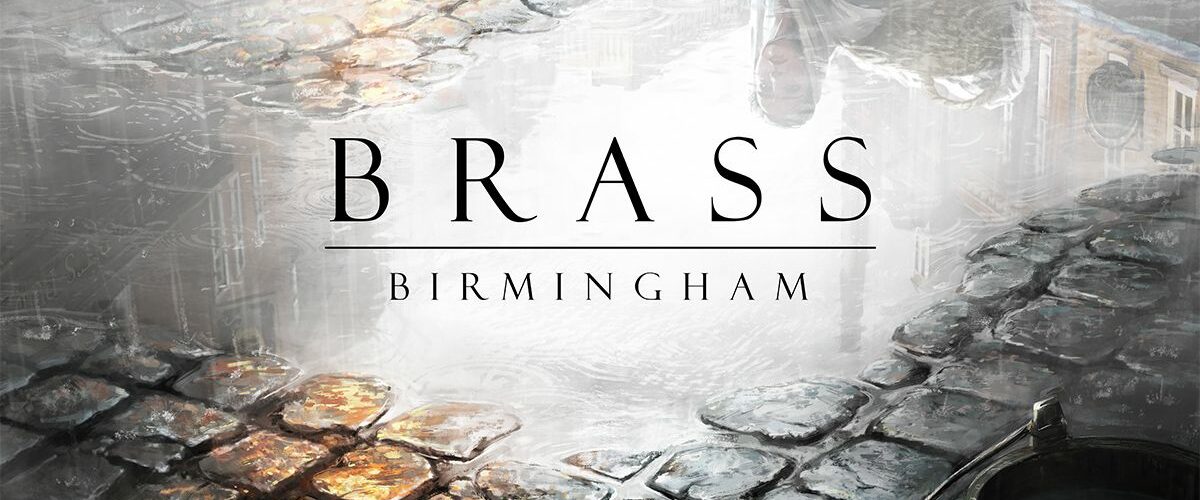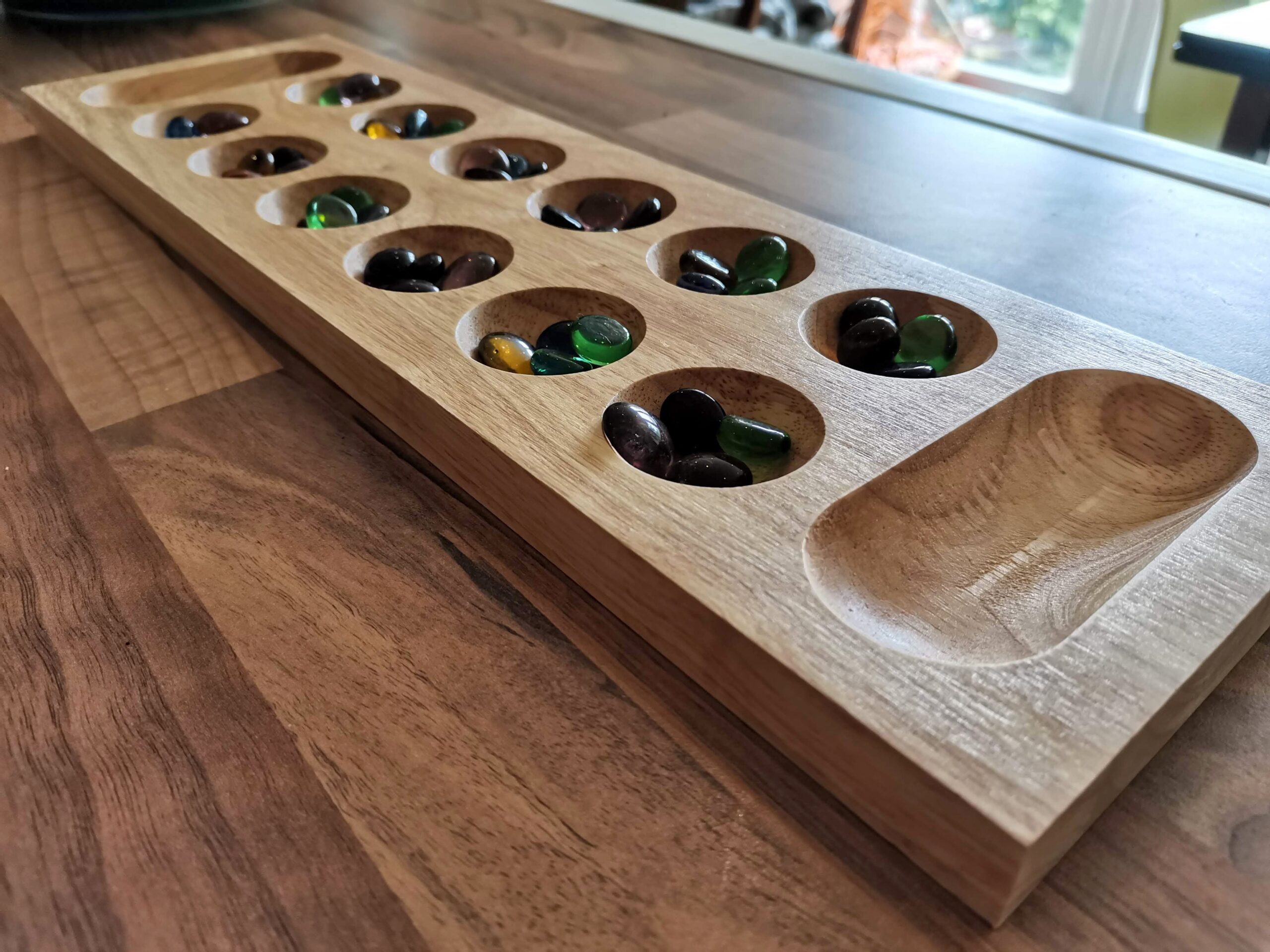Brass: Birmingham Review

Brass: Birmingham was released five years ago, but over the last couple of months it’s been the game on everybody’s lips. “Why?” you might ask. The buzz is because it recently knocked the incumbent canary – Gloomhaven – off its perch as the de-facto number-one ranked game on Board Game Geek. If you’ve found your way here in 2023, it’s likely it’s because you’ve heard the fuss and want to board the steam locomotive hype train. There’s one question on your lips, and I’m here to answer it for you.
“Is Brass: Birmingham as good as people say it is?” The answer is yes. A resounding, soot-covered, sing-it-from-the-pits, yes.
Bold as brass
Brass: Birmingham isn’t the first game in the series, as the ‘Birmingham’ suffix implies. In fact, it’s not even the second. It’s the sort-of third. Martin Wallace designed the original game – Brass – which was critically acclaimed, but if we’re being honest, not much of a looker. Around 2016 Roxley Games teamed up with Martin to refresh the game with a new lick of paint and a brand new version. Brass became Brass: Lancashire, and Brass: Birmingham emerged at the same time. The Kickstarter went bonkers, and the original £48,000 target was left in the dust as they raised a cool million quid.

Lancashire is the same game as the original, albeit with some rough edges smoothed off, while Birmingham took the original formula and tweaked it with some new mechanisms and a randomised board setup, which helped it stand on its own two feet. The biggest change came in the art and graphic design, which got a complete overhaul and produced one of the most gorgeous boards in all of boardgaming.
The hallmark of Martin Wallace’s designs is the level of interaction between players. Whether it’s direct mano-a-mano conflict like in A Few Acres of Snow, the hidden role area control of Discworld: Ankh-Morpork, or the auctions of Tinners’ Trail. The same interaction is woven into Brass’ tweed, but with a clever twist. There’s this wonderful feeling of simultaneous competition and co-dependence, as each player tries to carve out their own spot in the Black Country, while relying on the other players to extend the reach of their network for the all-important trading. It’s this networking which leads to the trickier concepts to wrap your head around in Brass: Birmingham.
Brassed-off
Brass: Birmingham only has two main resources to worry about: coal and iron. Despite only having these two, explaining how they work can be heavy going. Both are necessary to build the buildings you want on the board, but consuming them is tricky. Iron can be taken from anywhere on the board, as long as it comes from an Ironworks, before turning to the communal market. Simple. Coal, however, needs a transport connection to a coal source, whether that’s coal on someone’s coal pit tile on the board, or the market.

Brass: Birmingham places huge importance on connections and networks, which are related, but distinct. Your networks are linked tiles of your colour, while connections are any number of networks that intersect, regardless of whose they are. For some reason it feels as if the concept is harder to teach than it ought to be, and I’m not sure why, I just know that in every teach I’ve done so far, that’s the part I’ve had to repeat or clarify the most. Don’t be surprised if, in your first couple of games, people try to build something using coal, only to find that they can’t trace a connection back to the coal market.
I’ve placed emphasis on these foibles because it’s important to understand that when you get past that initial learning hurdle, Brass: Birmingham reveals itself like a drunk Premier League footballer. At its heart, it’s just a case of play a card, then choose whether to build something (cards have either locations or building types), make a transport connection to extend your network, develop an industry, or take a loan from the bank. There’s a bit more to it than that, but understanding those basic actions opens up this wonderful, Industrial Revolution-era playground, just waiting to be explored by you and your friends.
Getting down to brass tacks
Despite the simple actions Brass: Birmingham is as rich and deep as a bathful of balti. Each player has the same set of buildings on their player boards and the same options open to them at the start of the game. It means that although you never know which cards the other players are holding, there’s a good chance they’re eyeing up the same building spots as you. Getting early coal and iron can be a huge boon, as can opening those initial connections to the market spots around the edge of the board. I really like how the iron and coal cubes get placed on your tile when you build them, and it’s only by getting rid of them (used for building) that you get to flip the tile and score the points printed on it. In your first game it seems obvious; get the coal and iron buildings built, forcing others to use the resources on your buildings, so that you benefit from their actions. Points in the bag for doing nothing – nice.

Things aren’t always that simple though, and there’ll be times – especially in the late game – when all of your plans are left in tatters when another player uses the last pieces of iron you were relying on. Sure, you can buy it from the market, but do you have the money? Curse those smug, iron-taking knobheads! (inspired by real events). The dichotomy between wanting to demolish your opponents while depending on them is simply brilliant. It’s another game of not being able to do everything, and choosing which industries you want to focus on is a difficult choice, one made even more awkward when you realise you have a direct competitor sat opposite you.
One of my favourite features is the way the game is split into two eras. The canal era plays out for the first half of the game, and then there’s an interim scoring, and all of the first-era buildings and canal boat network links are removed from the board. It leaves players scrambling to rebuild industry and to forge new, more expensive, rail links between the towns and cities. Not only does it add a nuanced layer of strategy (upgraded buildings don’t get removed, giving somewhere to build from again), but it also acts as a kind of reset point, letting players suddenly strong-arm their way into areas of the map once the domain of someone else. It’s also a really good time to get a cup of tea.

Honestly, sitting here and typing up my notes, I keep daydreaming back to the last time I played, and I find myself wanting to play it again, right now. That’s how much I like this game.
Final thoughts
Despite the less-than-intuitive differences between the way the only two resources behave, and learning how networks and connections work, Brass: Birmingham is a work of art. From the most literal interpretation of art, with the gorgeous board which has a day and a night side (purely aesthetic), to the abstract notion of a game as art. If game design is an art, then Messrs. Wallace, Brown and Tolman have made something worthy of the Louvre.
The setting isn’t going to appeal to everyone. 18th-19th century industry in the Midlands isn’t exactly the most glamorous setting. This is a dyed-in-the-wool Euro though, which has thick. beige blood running under its oh-so-pretty skin. Theme and setting aren’t the things which sell a game like this to board game fans, and brass is no exception. I love how minimal the game is. In a world of over-produced Kickstarter nonsense, a game with very few wooden pieces – let alone plastic – is wonderful. Using cardboard tiles and boats taken from thin card player mats, with a few orange and black cubes on the board, is like taking a step back 10 or 15 years into the Euro game renaissance. So much so that the little wooden beer barrels feel like an extravagance. In a game where being able to read the board state at a glance is vital, the lack of 3D pieces is clearly a design consideration and it’s one I appreciate.
Brass: Birmingham also scales really nicely for different player counts. It borrows a principle from Martin’s previous games such as Tinners’ Trail, where parts of the board are only really used in three- or four-player games. It keeps things tight and focused in a two-player game, resulting in a game which works nicely at two. I’m having trouble finding fault to balance this review with, to be honest with you. It’s quite a heavy game in terms of strategy and planning, but the game’s ease of learning belies this, resulting in a game like an ogre onion. The more you play, the more layers you uncover, resulting in a game you’ll come back to time and time again.
Essentially, I think every Euro game fan should own Brass: Birmingham. It’s due another print run at the time of writing, and the BGG #1 news has pushed prices up to crazy highs. It’s a thinner box than most, with a small number of components, so don’t pay through the nose just to get on board the hype tram. Be patient, and you’ll have one of the best games ever made for a fraction of the price of many recent Kickstarters. I love this game, and will never turn down a game. It’s simply wonderful.

Brass: Birmingham (2018)
Designers: Martin Wallace, Gavan Brown, Matt Tolman
Publisher: Roxley Games
Art: Lina Cossette, David Forest, Damien Mammoliti
Players: 2-4
Playing time: 90-120 mins













